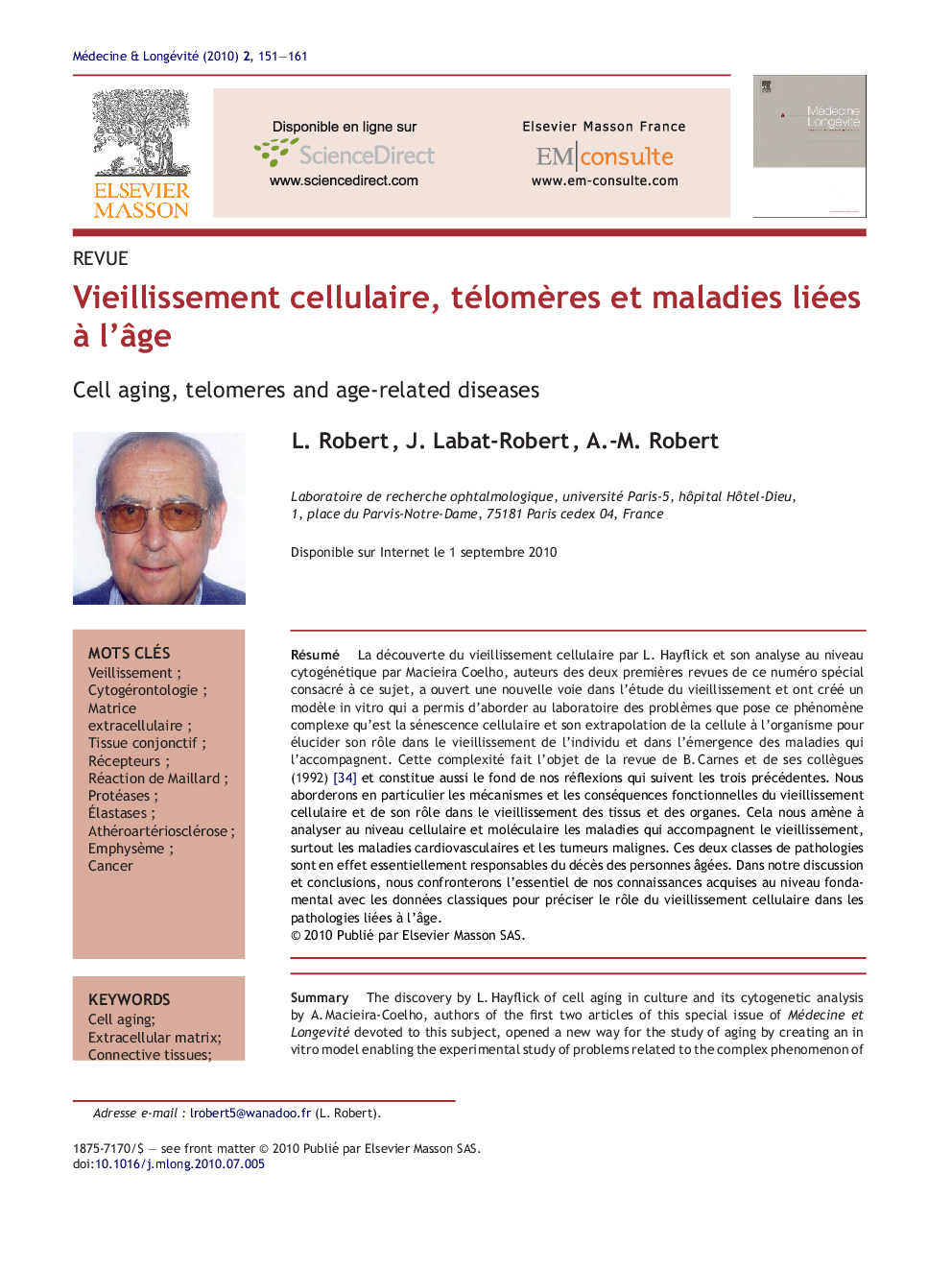| Article ID | Journal | Published Year | Pages | File Type |
|---|---|---|---|---|
| 1920164 | Médecine & Longévité | 2010 | 11 Pages |
Abstract
The discovery by L. Hayflick of cell aging in culture and its cytogenetic analysis by A. Macieira-Coelho, authors of the first two articles of this special issue of Médecine et Longevité devoted to this subject, opened a new way for the study of aging by creating an in vitro model enabling the experimental study of problems related to the complex phenomenon of cell-senescence and its extrapolation to the whole organism in order to elucidate its role in aging of individuals and the emergence of age-related diseases. The complexity of these problems is the subject of the review by Bruce Carnes and his colleagues (1992) [34]. It is also at the basis of our reflexions following the three preceeding articles. We shall discuss in particular the functional consequences of cell aging and its role in tissue and organ aging. This will lead to the study of the cellular and molecular mechanisms involved in age-associated diseases, essentially cardiovascular and malignant pathologies. These two pathologies are responsible for the demise of most seniors, at least in industrialized countries. In our discussion and conclusions, we shall try to confront results acquired at the fondamental level with “classical” data at the clinical level in order to define the role of cell aging in age-associated pathologies.
Keywords
Related Topics
Life Sciences
Biochemistry, Genetics and Molecular Biology
Ageing
Authors
L. Robert, J. Labat-Robert, A.-M. Robert,
